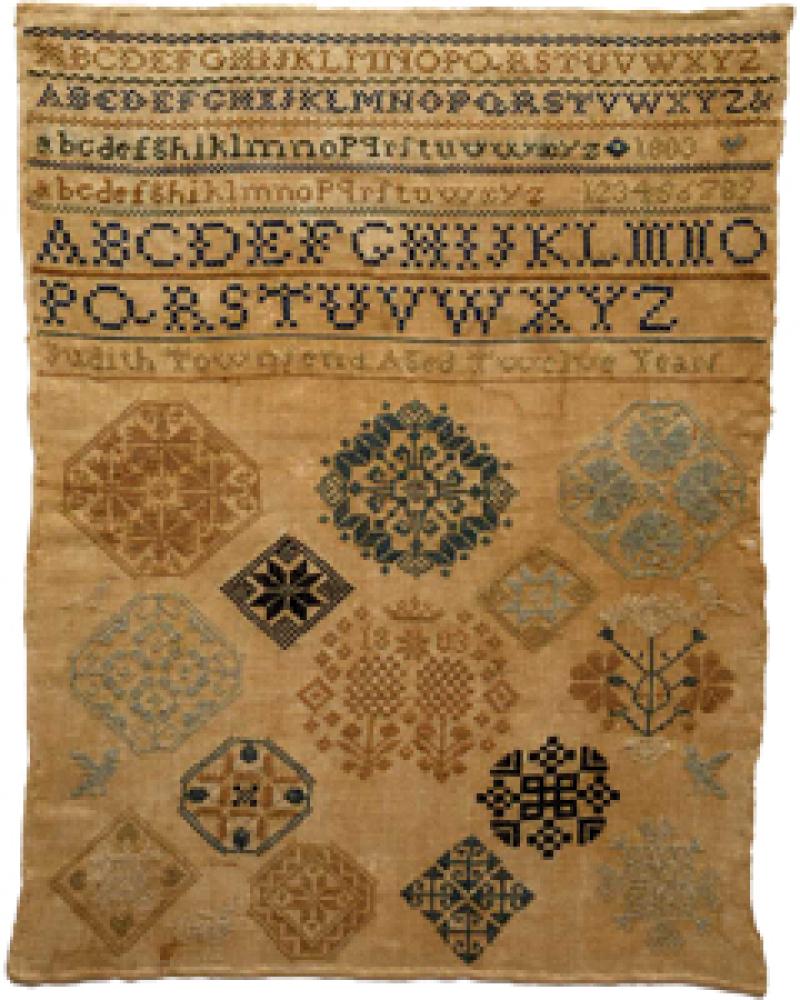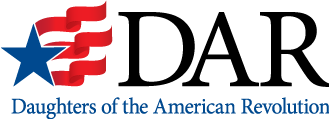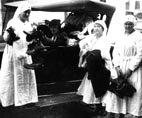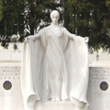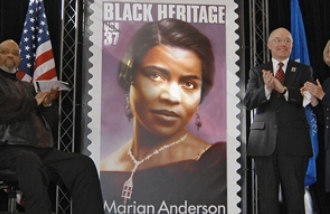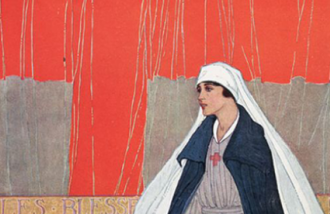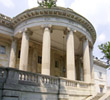From the earliest days of colonization in North America, sewing traditions arrived with the settlers. During the 18th century, most design and motifs came into the United States directly from England and Europe. As in most decorative arts, those would be absorbed and eventually take on their own American flavor.
Throughout the nineteenth century thousands of immigrants entered the United States bringing with them their traditions, beliefs, and distinctive contributions to American culture. These samplers represent sampler makers who entered the ports of New York City, Boston, Philadelphia, and Baltimore, as well as Quaker designs incorporating medallions, paired birds, swans, bellflowers, floral sprigs, wreaths and beautiful lettering.
Sampler, 1793 / Sarah Herbert
Sampler, 1793 / Sarah Herbert / Probably London, England / Silk on linen. The donors stated that in 1794 Sarah Herbert married Christopher Hommann from Heidelberg in London and then, with her new husband, sailed to Philadelphia to make their home. The marriage of a Johan Christoph Hommann and Constantia Herbert is recorded at Saint Martin in the Fields, London. The archives at Christ Church in Philadelphia reveal a Sarah Hommann, daughter of John and Constantia Homman, who was born September 14, 1809 and baptized May 23, 1810. It seems likely that Constantia brought the sampler to Philadelphia and named her daughter for Sarah, a yet unidentified family member. (Gift of Miss Amelia Harrison Brooke and Mrs. William Hill Brooke)
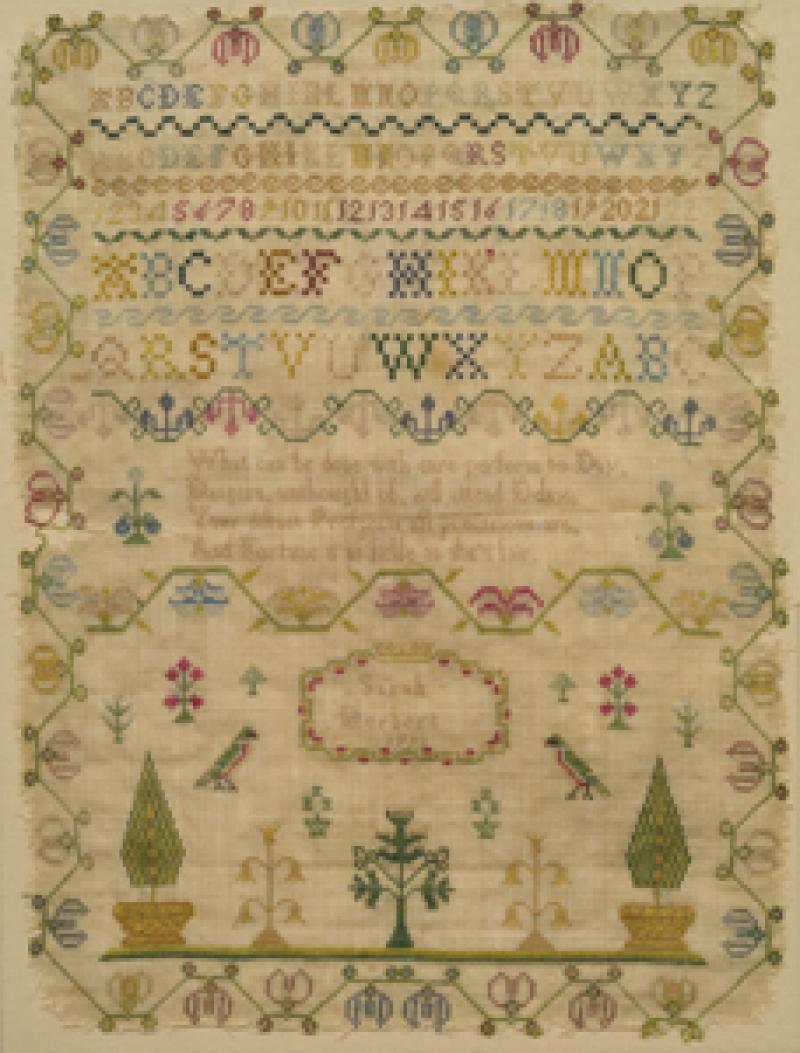
Sampler, 1819 / Frances Tyson
Sampler, 1819 / Frances Tyson / Wool on linen / England or New York. Frances Tyson was born December 1807 in Kingston Upon Hull, Yorkshire, England. The Tyson family immigrated to New York City at an unknown date. Her loosely worked sampler exhibits both English and American characteristics. Frances married Joseph M. Greeley October 11, 1837 in New York City. The 1870 census shows the Greeleys living in Hackensack, New Jersey with three adult children including Emma, the donor. Joseph Greeley is listed as a carpenter and builder. (Gift of Emma A. Greeley Merritt Chester, daughter of Frances Tyson)
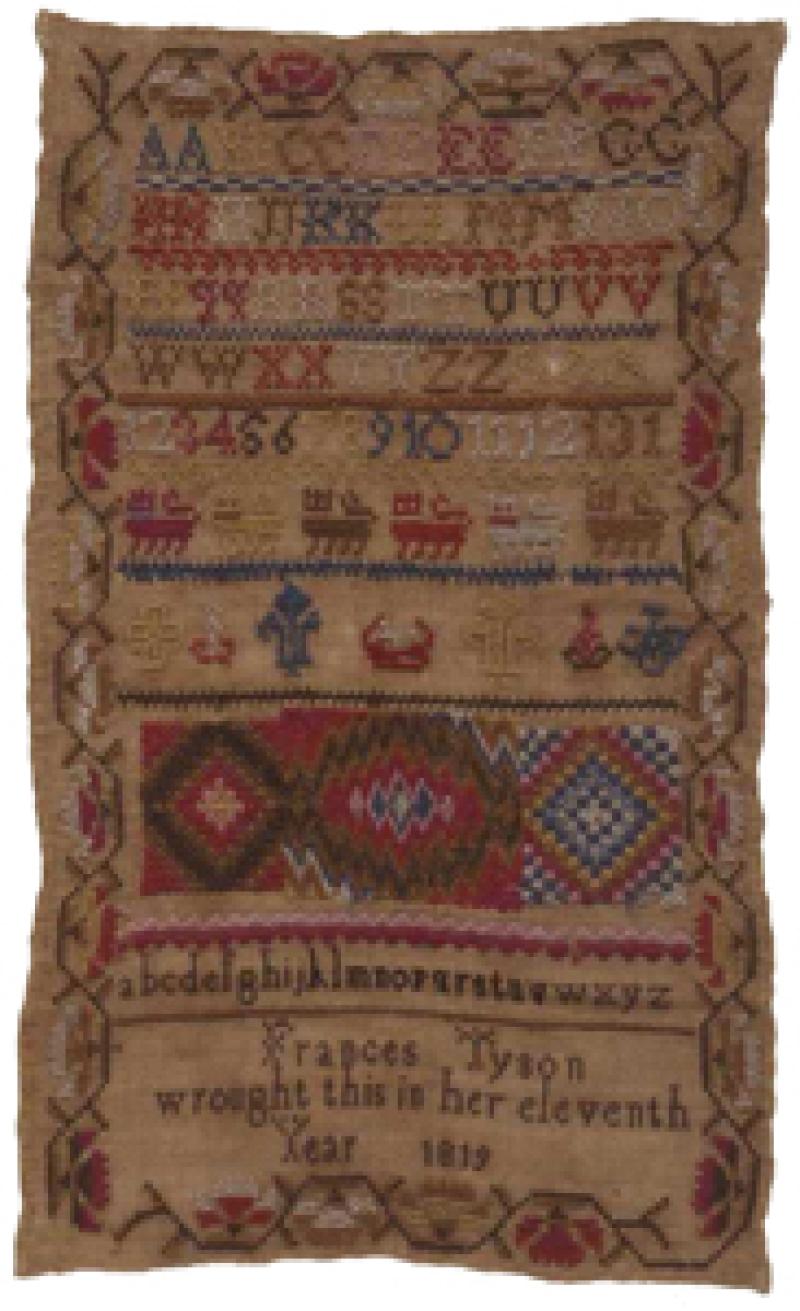
Sampler, 1796 / Sarah Cook
Sampler, 1796 / Sarah Cook / Probably Yorkshire, England / Silk on linen. Sarah Cook "Marked this Sampler - - - in the 12 Year of Her Age" interpreting English designs with whimsical charm. Sarah married John Stickney in Holme Upon Spalding Moor in Yorkshire, England in 1806. They arrived in the United States some time before John became a naturalized citizen in 1838. John died in 1850 and Sarah is listed as head of the household in the 1850 census of Clark County, Ohio. The 1860 census reveals her living with her son George in Clark County. Sarah died in 1867 and is buried in Harmony, Ohio. (Gift of Sarah S. Rogers, granddaughter of Sarah Cook)
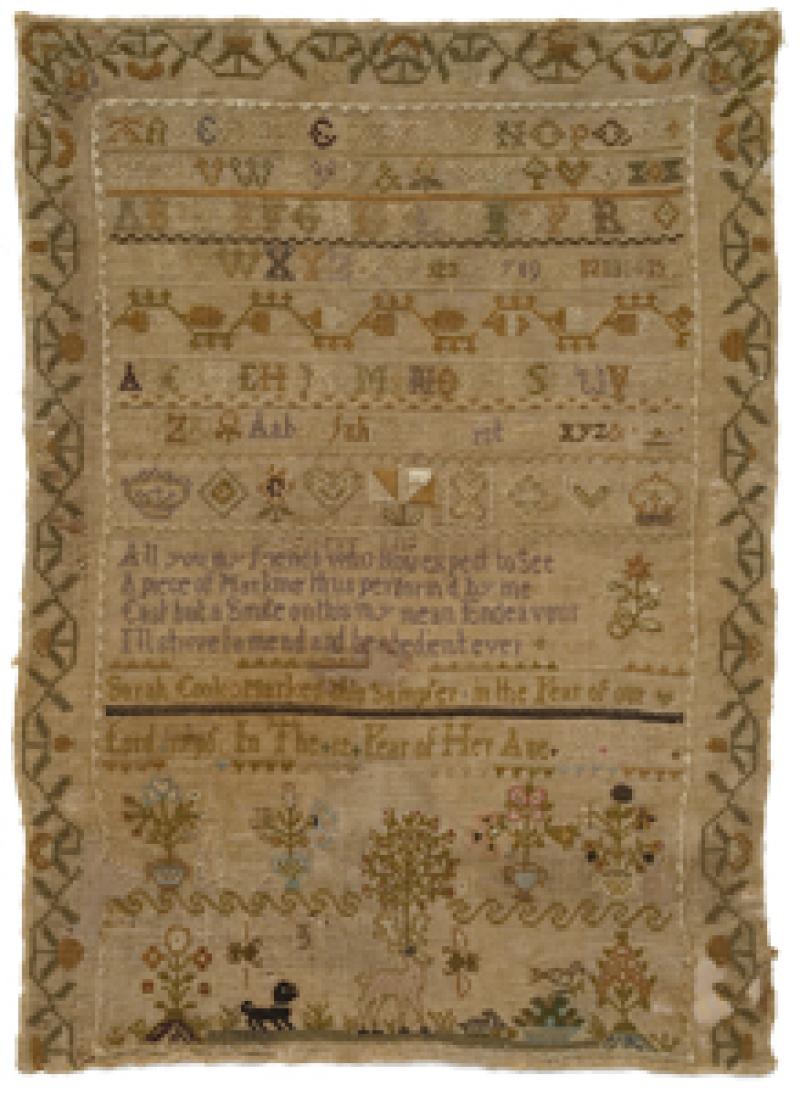
Sampler, March 17, 1848 / Jane Dewar
Sampler, March 17, 1848 / Jane Dewar / Edinburgh, Scotland / Wool and silk on linen. Jane Dewar was twenty-three when she worked this small vibrant sampler honoring her father John Dewar and her mother Ann Gordon with large stitched initials. She married James Russell of Lanarkshire, Scotland in 1849-50. According to passenger lists, the young couple "arrived in Boston on the steamer ‘Cambria’ from Liverpool" in October 1850. Jane and her husband are both buried in Cedar Grove Cemetery, Dorchester, Massachusetts. (Gift of Miss Charlotte Carman and Mrs. Ann G. Carman Peavey, great-granddaughters of Jane Dewar)
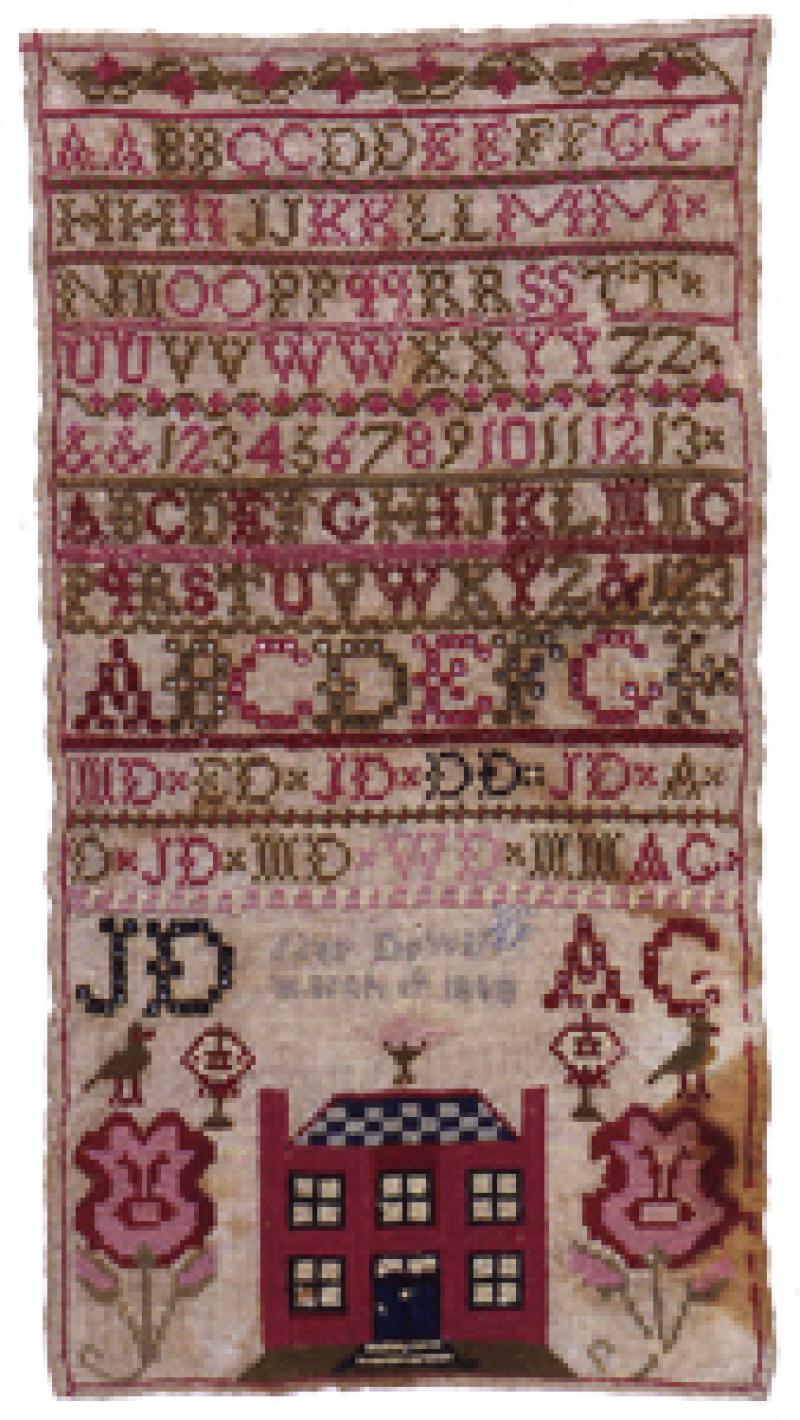
Needlework picture, about 1810 / View Near Exeter
Needlework picture, about 1810 / View Near Exeter / Rebecca Rooker / England or Baltimore / Silk chenille and watercolor on silk. (Right: Hand-colored aquatint / "View Near Exeter" n.d. / William Cartwright after a painting by Thomas Walmsley) Rebecca Rooker and her sisters emigrated from England to Baltimore, where they operated one of Maryland’s best known schools for much of the early nineteenth century. It is unusual to find both the maker’s needlework with the original print source. This romanticized view of the English countryside would have appealed to both sides of the Atlantic. (Needlework: Friends of the Museum Purchase, purchased from the great-great-great granddaughter of Rebecca Rooker’s brother)
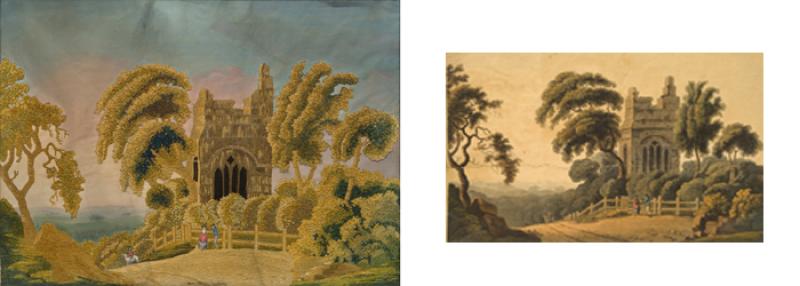
Sampler, about 1812 / Ann Cartwright
Sampler, about 1812 / Ann Cartwright / Possibly Yorkshire, England / Silk on linen wool. Ann Cartwright and Kershaw Crowther were married in Lincoln, England in 1829. In August 1848 they arrived with their four children in New York City aboard the ship "Waterloo." Both Anne and her husband are buried in Green-Wood Cemetery, Brooklyn. Their daughter Martha married Albert Horn, Jr. son of Elizabeth Gertrude Tiemann whose family record sampler adjoins this one. Each was donated by Mrs. Grousset, great-great granddaughter of both needleworkers. (Gift of Mrs. Richard J. Grousset, great-great-granddaughter of Ann Cartwright)
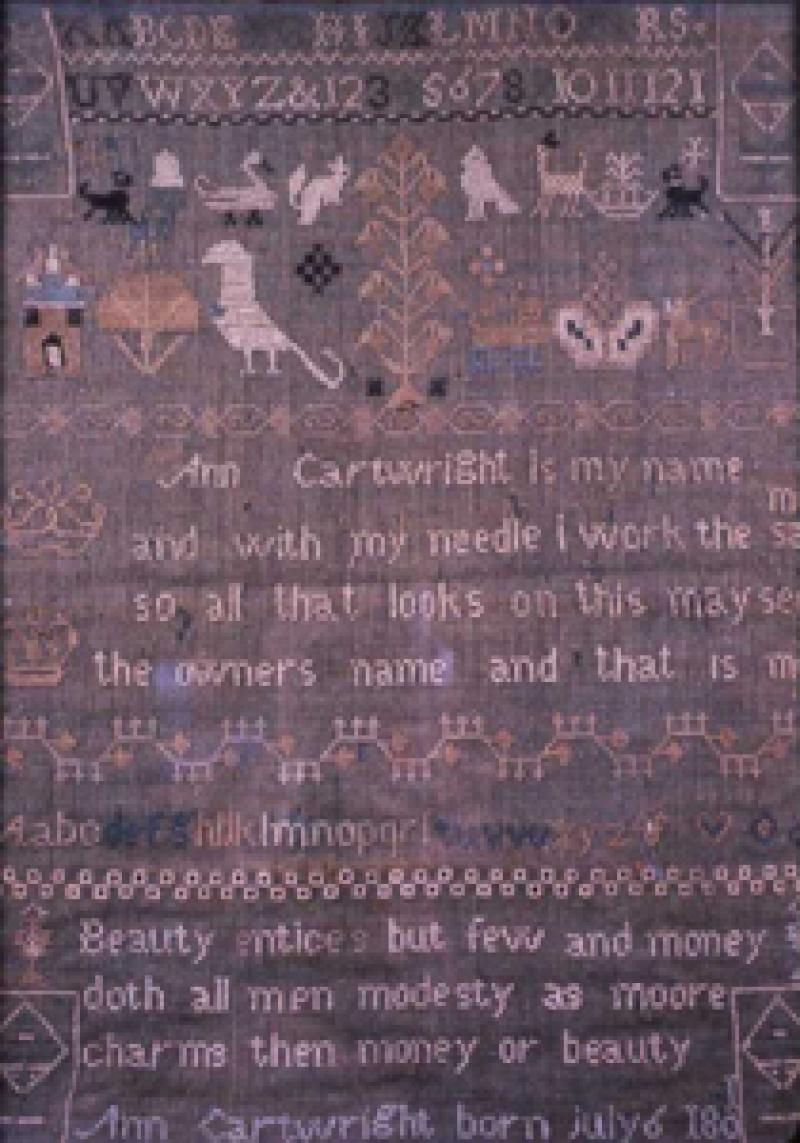
Family Record, 1819 / Elizabeth Ann Gertrude Tiemann
Family Record, 1819 / Elizabeth Ann Gertrude Tiemann / Miss Pell’s Seminary / New York City / Silk on linen. This family record and the sampler of Ann Cartwright illustrate not only the great influx of English and European immigrants in the nineteenth century, but also the blending of cultures and traditions. Elizabeth Tiemann was the daughter of Anthony Tiemann who emigrated from Germany in 1803. He was the first to manufacture a variety of paint colors in America and became an extremely successful New York entrepreneur. Elizabeth’s son married Martha, daughter of sampler maker Ann Cartwright. (Gift of Mrs. Richard J. Grousset, great-great granddaughter of Elizabeth Ann Gertrude Tiemann)
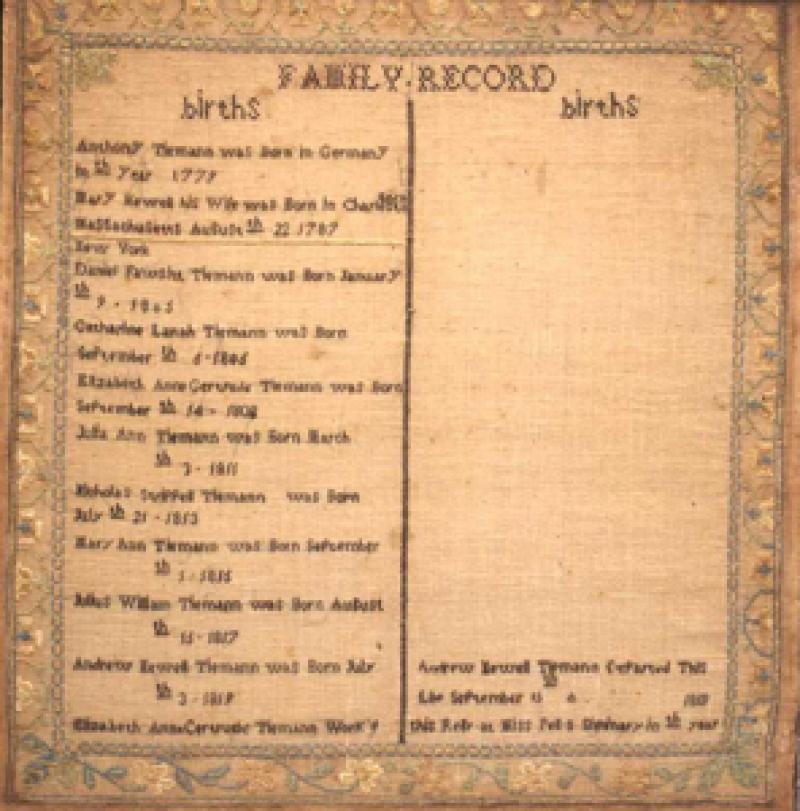
Quaker Samplers
The Ackworth School is well-known for its beguiling medallion samplers, such as the lovely example following stitched by Hannah Grimes. The Westown School, founded by the Society of Friends in Pennsylvania, used Ackworth's needlework instruction as a basis for their sewing classes. Look for Quaker embroidery designs such as paired birds, bellflowers, floral sprigs and wreaths as well as precise and beautiful lettering when researching American samplers.
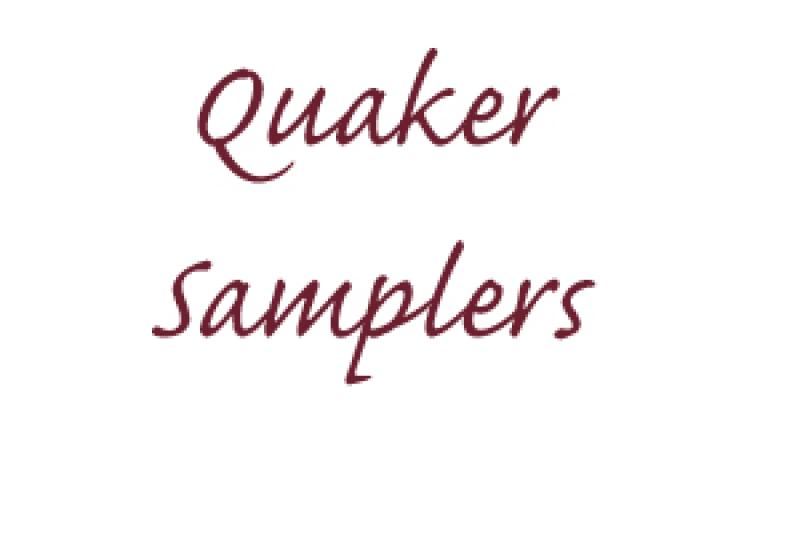
Sampler, 1798 / Hannah Grimes
Sampler, 1798 / Hannah Grimes / Ackworth School / Yorkshire, England / Cotton and silk on linen. When she was thirteen, Hannah Grimes entered the Quaker Ackworth School 2 January 1798 and remained until 3 January 1799. Born in Eydon, Northamptonshire, Hannah and her family attended the monthly Bugbrook and Northampton meetings and the quarterly Northampton Meeting. She has filled her sampler not only with exquisite half-medallions but also a graceful flower, swan, paired birds and the familiar "A Token Of Love." Hannah died May 6, 1807 in Eydon. (Friends of the Museum Purchase)
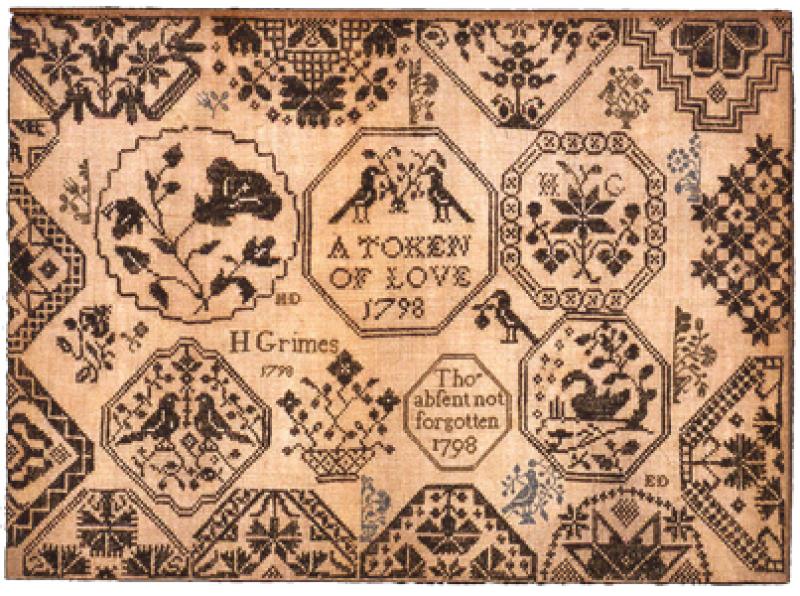
Sampler, 1814 / Martha Woodnutt
Sampler, 1814 / Martha Woodnutt / Westtown School / Westtown, Pennsylvania / Cotton on linen/wool. The darning sampler so strongly associated with the Westtown School is a perfect blend of painstaking needlework and practicality. Martha Woodnutt and her family were members of the Society of Friends in Salem County, New Jersey. Martha married Joshua Reeve in 1835 and was the mother of two children. She died in 1868 and is buried in Friends Burying Grounds, Salem, New Jersey. (Friends of the Museum Purchase)
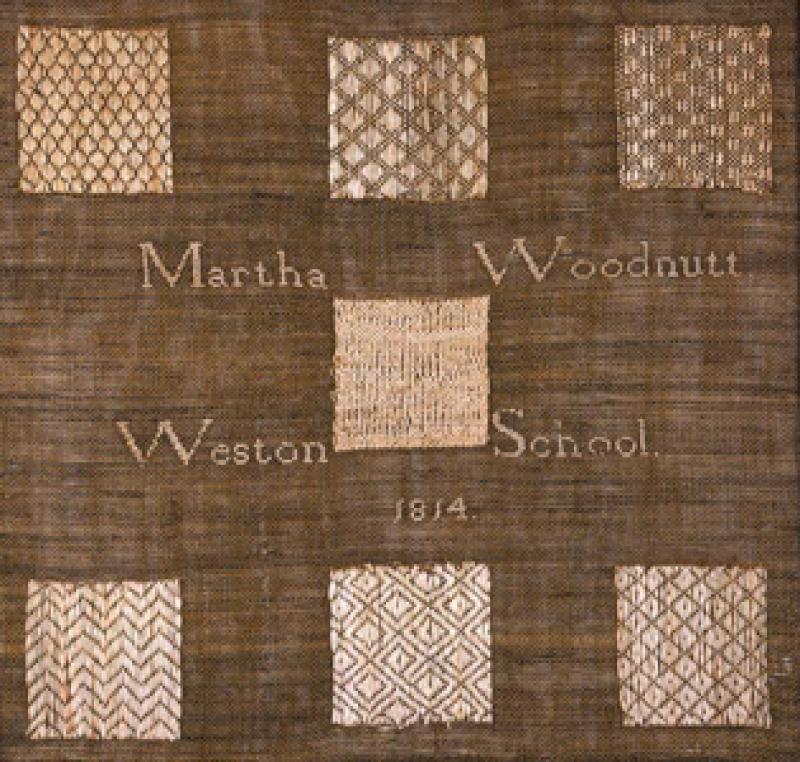
Sampler, 1801 / Mary Wiley
Sampler, 1801 / Mary Wiley / Westtown School / Westtown, Pennsylvania / Silk on linen. Mary Wiley was a prolific needleworker, who stitched one sampler at Westtown in 1801 before leaving the school during a measles outbreak. During her second enrollment in 1804, she completed four additional samplers. She was born in Maiden Creek, Berks County, Pennsylvania and attended Maiden Creek School founded by the Society of Friends. She worked her first known sampler at Maiden Creek School in 1796. (Private Collection, photography courtesy of M. Finkel & Daughter)
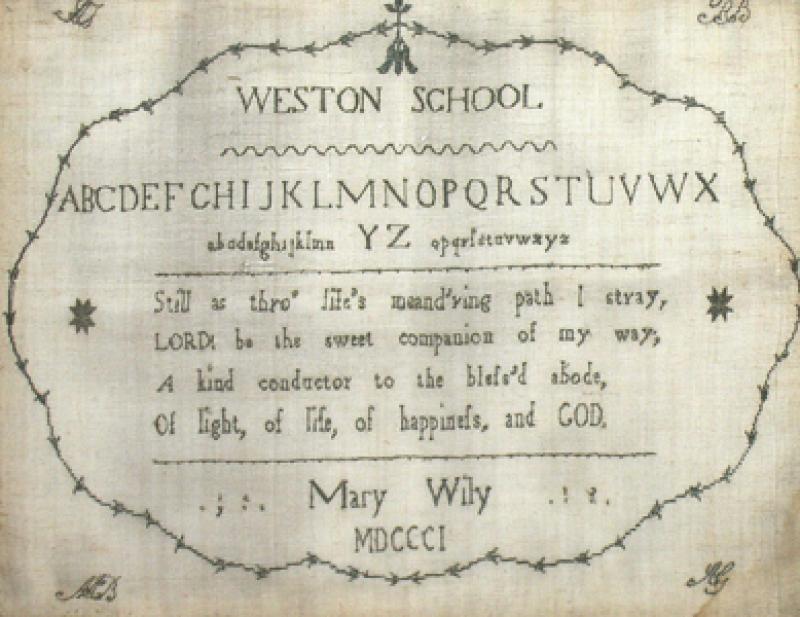
Needlework picture, 1804 / Mary Wiley
Needlework picture, 1804 / Mary Wiley / Westtown School / Westtown, Pennsylvania / Silk on linen. Mary Wiley was 18 when she stitched a rare image of "West Town Boarding School" during her second enrollment. Mary set the school surrounded by stately trees in a landscape of fenced grassy lawn. This could have been a farewell to Westtown. A year later, she married Mordecai Wright in Maiden Creek where they both taught at the Quaker school. After Mordecai’s death in 1812, she married John Starr Pearson in 1815. She is buried at Maiden Creek Meeting Burying Grounds. (Anonymous lender, photography courtesy of M. Finkel & Daughter)
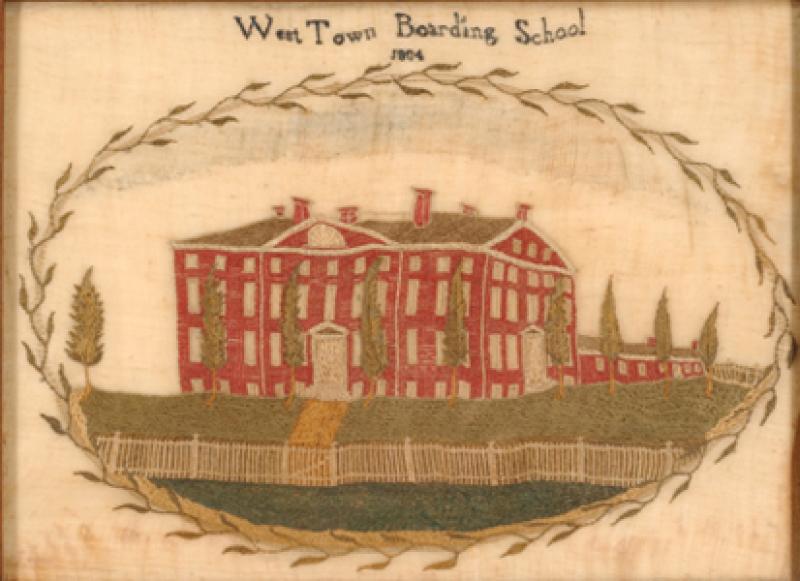
Sampler, 1812 / Mary P. Brooke
Sampler, 1812 / Mary P. Brooke / North School / Philadelphia / Cotton on linen. The arrival of this sampler resulted in an intensive search to pinpoint the North School and to identify the maker. A search of Quaker records by an independent researcher definitely identified a schoolhouse built in 1799 on a lot adjoining the Philadelphia Meeting for the Northern District. Tracing the sampler maker was more of a challenge. It may have been a Mary Brooke who was the daughter of Samuel and Sarah G. Brooke, but the investigation continues. To date we have identified seven samplers made at the North School. (Bequest of Ethel van Roden Price)
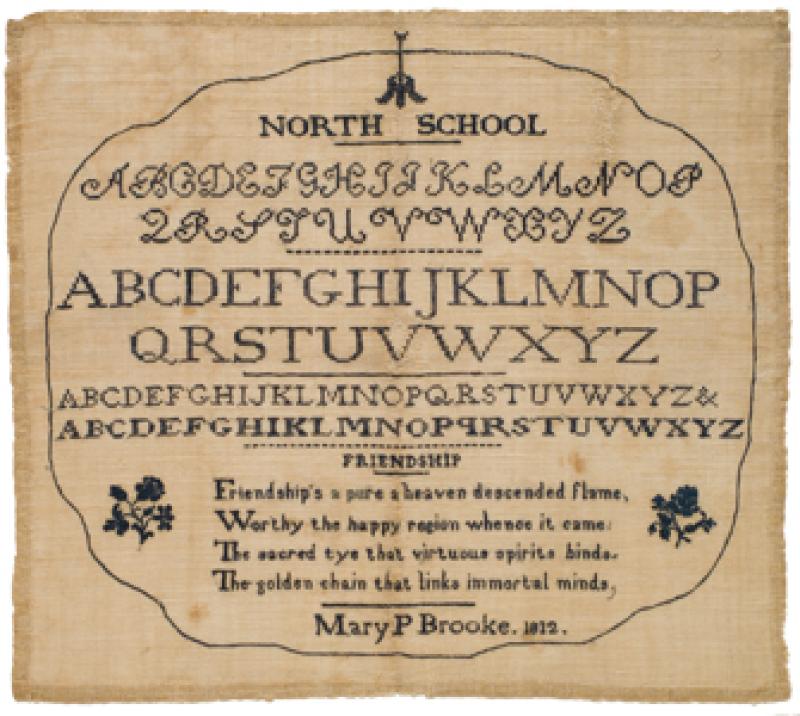
Sampler, 1803 / Judith Townsend
Sampler, 1803 / Judith Townsend / Cape May County, New Jersey / Silk on linen. The medallions stitched on this sampler always pose many questions, but to date neither school nor teacher is identified. The sampler, one of the earliest donations to the collection, arrived in 1918. Judith, the daughter of Elijah and Judith Townsend, married Humphrey Swain in 1811 and died in 1861. Judith is buried in Asbury Methodist Episcopal Cemetery in Swainton, New Jersey. (Gift of Mrs. Humphrey Swain, daughter-in-law of Judith Townsend)
